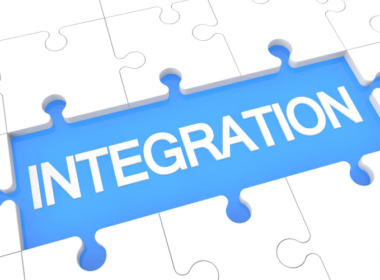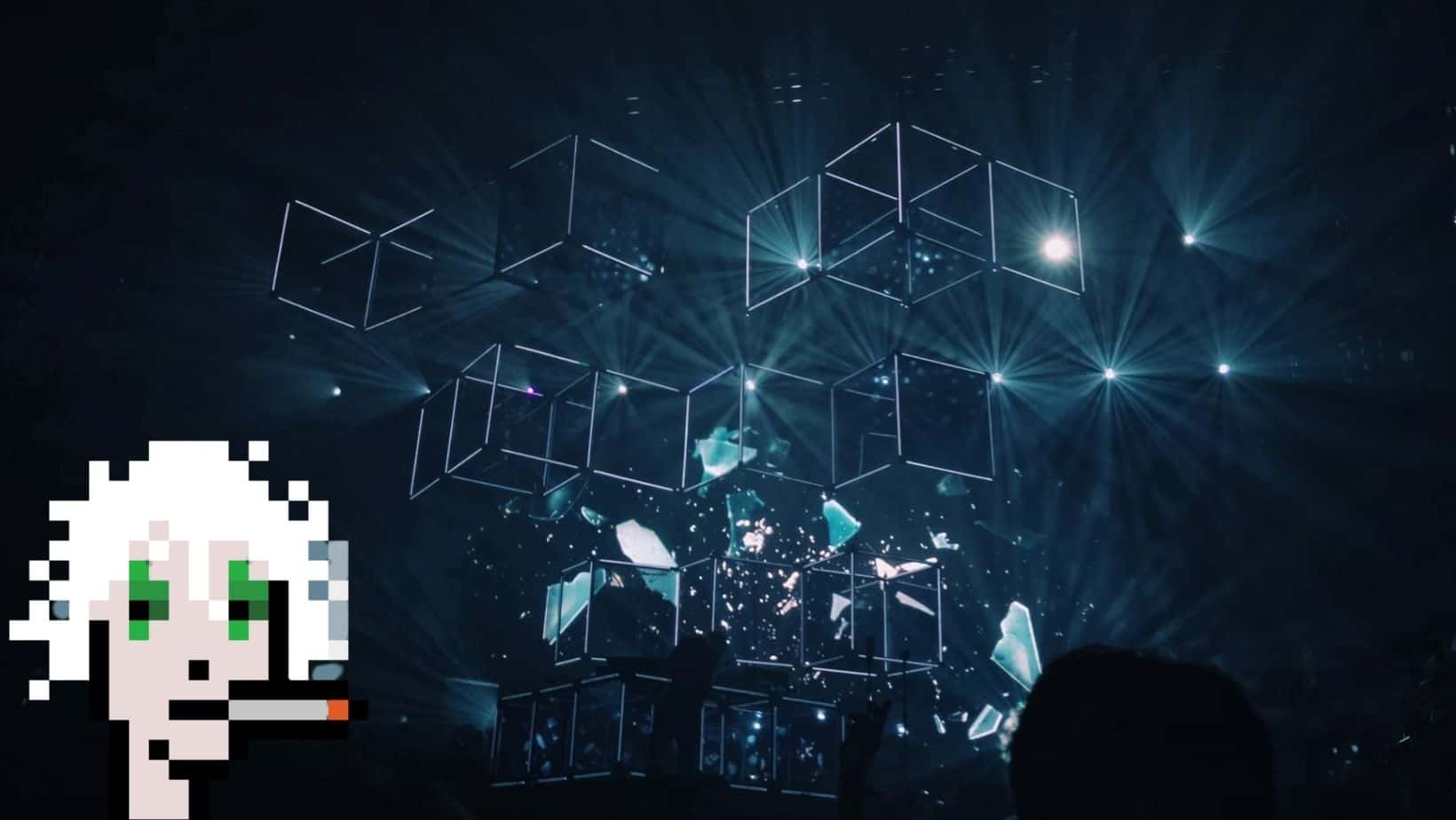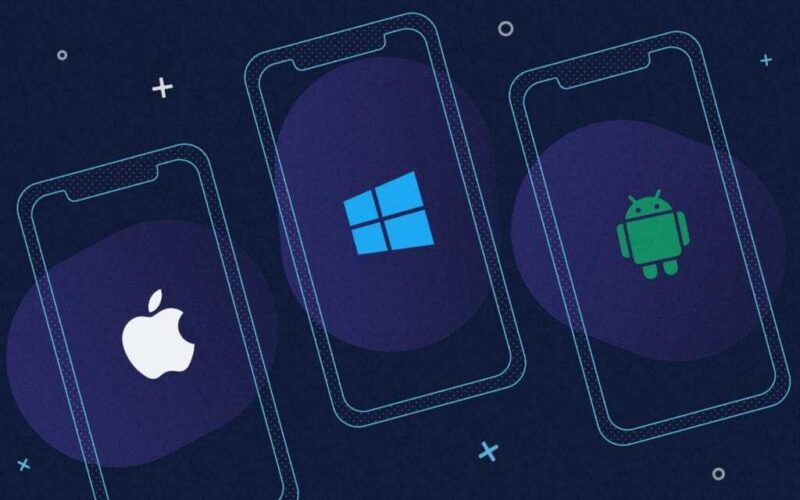In 2021, Kings of Leon clocked in USD 2Mn+ for their music track by selling it using a non-fungible token (NFT). Jack Dorsey, the Twitter founder, sold his first-ever tweet as NFT for approx USD 3Mn+, and then a piece by digital artist Beeple was sold for USD 69.3Mn+.
These are just a few examples of the frenzy around NFTs.
For sure, NFTs are here to stay, the signals are pretty strong with the NFT market cap growing impressively fast, from $141.56 million in 2019 to $338.04 million in 2020. The latest report estimates NFTs to be already worth more than $7 Billion.
Here’s a detailed report on total sales involving a non-fungible token (NFT) in gaming, art, sports, and other segments from 2018 to 2020 (in 1,000 U.S. dollars)

Not just that, there were about 70k+ sales between Sept 15, 2021 to Oct 15, 2021.
And where are all these transactions happening?
It’s called an NFT marketplace.
Yes, an NFT marketplace is quite similar to an e-commerce platform but unlike traditional eCommerce websites, NFT marketplaces are built on a blockchain architecture.
If you’re planning to venture into the luxury collectibles market, we highly recommend you to read this insight to stay abreast of the latest in the NFT marketplace development.
What is NFT?

NFT stands for Non-fungible Token (NFT).
But, what’s non-fungible?
To understand that, let’s understand what is fungible?
Gold, crude oil, currency are all fungible i.e., 10gm of gold that you might be having is equal to the 10gm of gold your best friend has. Similarly, with crude oil and money. In short, fungible digital/physical objects are replaceable, they are indistinguishable, they are not unique.
Now, what is a non-fungible digital/physical good?
Anything that’s unique, be it the first tweet of Jack Dorsey, or the ‘Disaster Girl’ meme’s original image. A different example, the Jersey Lionel Messi won in Copa America 2021 final can potentially be a non-fungible item, while the duplicate Jerseys that are sold in apparel stores with a number 10 on it and the name of Argentina/Messi could not be a non-fungible item.
The million-dollar question, what are NFTs?
NFTs are digital tokens that are created using the smart contracts and algorithms on a blockchain network like Solano, Ethereum, Flow, Tron, etcetera to represent the digital ownership of non-fungible art, games, real estate, music, collectibles, etcetera.
What’s an NFT marketplace?

NFTs cannot be traded directly like fungible tokens, but a decentralised NFT marketplace enables you to create, buy, sell, and store minted NFT tokens of digital assets.
By the way, minting is the process of creating a new block for the NFT, validating the information about the NFT, and storing that information on the Blockchain network, which could be Ethereum, Solano, or any other Blockchain network.
Also, NFTs ownership can be transferred & tracked with smart contracts. NFT marketplace, therefore, acts as an auction platform for digital collectibles.
Note: Blockchain, as you would know, is the open source technology that powers up these platforms. It is built for security, transparency and decentralization. Blockchain represents the distribution of data in the form of blocks or chains with no single authority or control over them. For NFTs, it ensures verifiable proof of ownership, ownership traceability, and ownership information immutability. If you’re new to Blockchain, we recommend this insight by Abhijith HK where he has demystified Blockchain technology. If you’re someone from the agritech industry, here’s an insight on how you can use Blockchain for food traceability from farm to table. And if you’re from the finance world, do read the insight on DeFi (decentralised finance).
A few NFT marketplace inspirations
SuperRare : Focuses on digital art by a handful of selected leading concept artists.
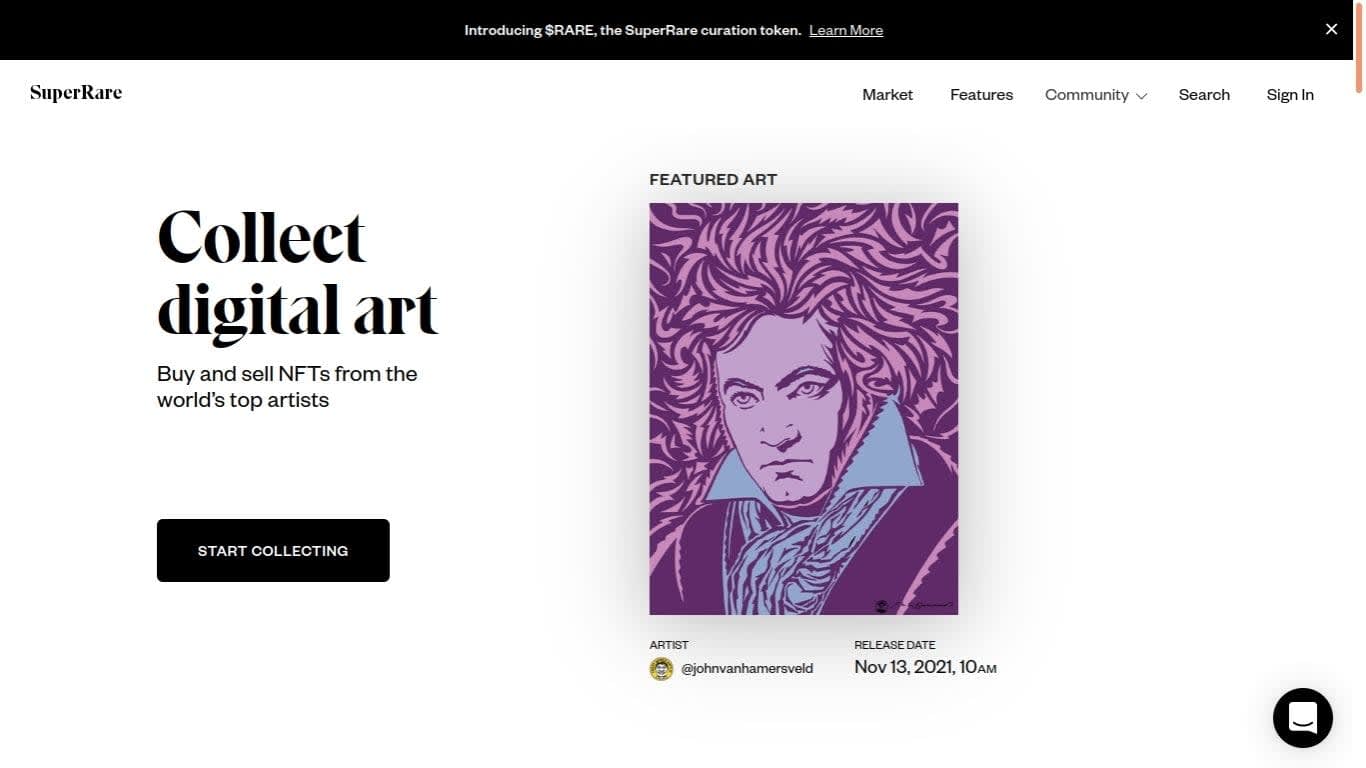
Opensea : A trending universal marketplace that has non-fungible assets representing domain names, artworks, training cards etc.,
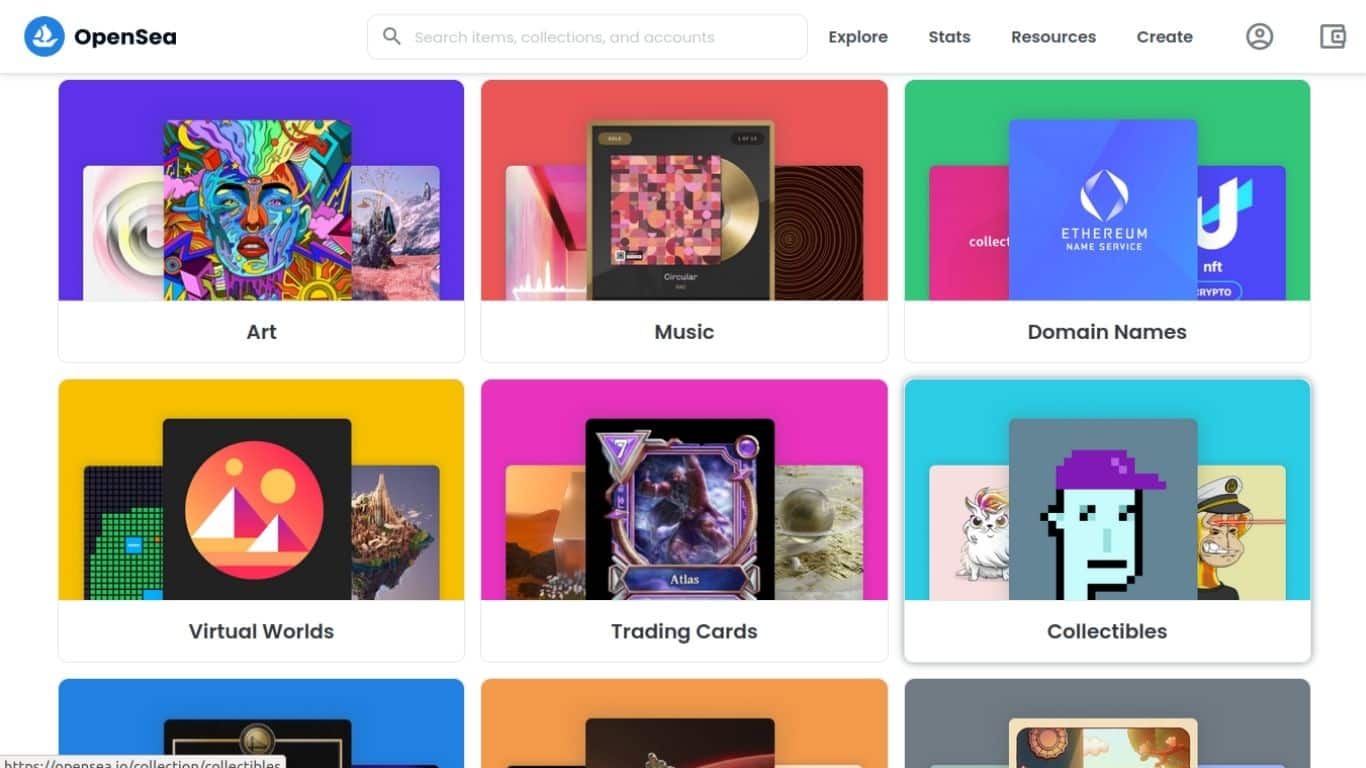
Rarible : This is owned by community members possessing rari tokens. It supports a wide range of digital collectibles with an emphasis on art tokens, photography, metaverses, games, music, memes, NSFW, and punks.
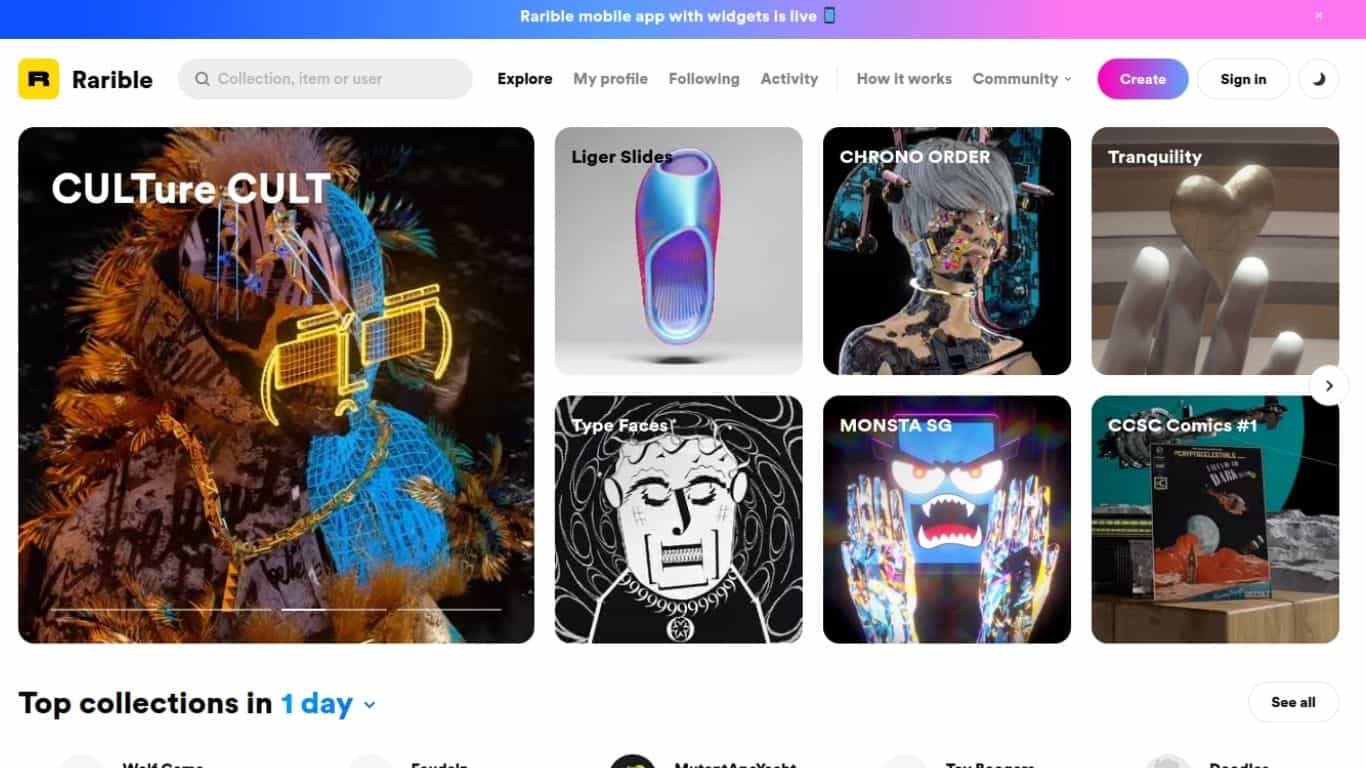
Essential features of an NFT Marketplace
Aesthetic storefront
NFTs are decentralized, it falls under web3.0 but as of now we are accessing them using web2.0 browsers and apps on our mobile phones and digital devices. And so, the way we access it for minting NFTs, bidding/auctioning for digital collectibles, verifying the ownership, or for any other use case should be highly intuitive. Your NFT marketplace should score high on UI-UX, and the transaction interface, the customer convenience should be at least at par with other existing marketplaces that we know today.
Real-time English, Dutch Bidding
Are you aware about how bidding works in the physical collectibles market? Of course, you know that bidding happens in real-time, the hammer stroke style bidding. Pretty much every existing NFT marketplace has real-time auctioning/bidding features. And so should your NFT marketplace.
But within the bidding world, we have different approaches. Your NFT marketplace should ideally facilitate all the available bidding approaches. The most common bidding styles are the Dutch auction and the English auction.
In the Dutch auction method, NFT sellers will decide the minimum and maximum price range within which the bidding shall happen. Usually, the Dutch auctioneers would start from a price way higher than the expected demand price, and over the process of bidding the price would decline. As soon as a bidder accepts the auction price, the bidding process ends.
In the English auction method, the NFT auctioneers would define a minimum price for the bidding to begin and over the auction price – the highest price bidder would get the collectible item. Lastly, there is a fixed price bidding as well, which is equivalent to how sales happen in an organised retail market.
Bundled selling
Another feature that some of the top NFT marketplaces have is the bundled NFT selling. In this, creators can pack up together a bundle of NFTs or tokens for digital collectibles, and sell it on the marketplace. This is useful in capping the gas fee, which is the cost for transacting on the Ethereum network.
Rankings, search & filters
NFT discoverability contributes to the customer experience, better discoverability and visibility can help creators clock in more revenue as well. Facilitating bidders to find non-fungible tokens based on their volume, demand, price, listing date, recency, scarcity, expiration date, view counts, and other search criteria/filters would result in better engagement and experience for both bidders and sellers.
Ownership transferability & royalties
Your NFT marketplace must facilitate ownership transferability features, so that NFT owners can sell/resell the owned tokens. There should also be options for original creators to configure the NFT ownership transferability in a way that they keep earning the royalties with every new sale.
Tech stack for NFT marketplace development
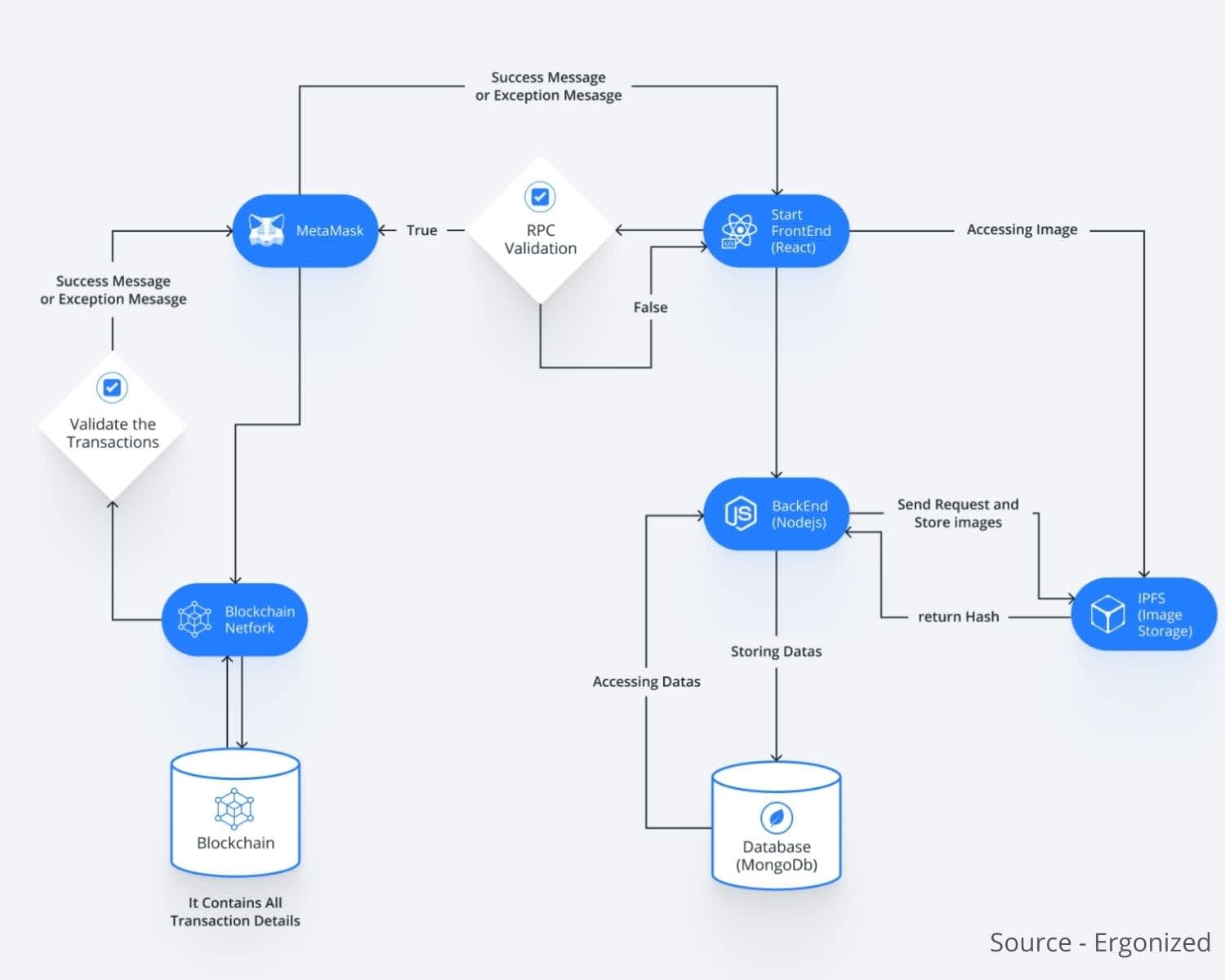
NFT architecture terminologies
Before we discuss the tech stack for NFT marketplace development, let’s take a look at some of the common NFT architecture terminologies:
- To build NFT marketplaces, you need to integrate your application with a blockchain technology network like Ethereum, Ripple, Solano, IBM Blockchain, etcetera. You may build your own blockchain network as well but it would also mean higher costs.
- Minting is the process of creating a new block, validating it, and recording it in the blockchain. Minting costs gas on the ethereum network. You may also introduce a provision for lazy minting which doesn’t cost any gas.
- Token standards are a subsidiary of smart contracts standards. It’s a set of minimum requirements that the application must comply with to create new tokens, issue tokens, and deploy it on the underlying blockchain network. Smart contract standards consists of token standards, name registries, etcetera to perform transactions on the blockchain network, boost up interoperability among different contracts, and facilitate efficient communication within the blockchain ecosystem. Here are a few important Ethereum based NFT token standards:
- ERC 721: The tokens are non-fungible, unique and can be priced uniquely. This is the base token standard for NFTs.
- ERC 998: This token enables you to create a non-fungible token but it is composable i.e., it can consist of non-fungible tokens like ERC 721, as well as uniform fungible tokens like ERC20. And so, using these tokens it is possible to sell a group of assets as one single collectible.
- ERC1155: This token was developed for trading Games as NFTs. The unique collectibles in games can be a NFT, while a transactional feature can make use of fungible tokens.
- Scarcity – As you are already aware now, different token standards enable creators to create tokens in multiple ways i.e., as one single asset or a set of assets. Same way, depending on how the NFT marketplace is developed and the features it provides, a creator may decide on how many copies of the asset would be available for trade. For example, in the web 2.0 world, a copy of a movie can be copy pasted as many times as possible and people may claim to have legally purchased it. But in the NFT world, how many copies would be legally in circulation and who are the owners are all within the control of the owner/subsequent owners. If the NFT token is unique, and if only one copy is in circulation, it is considered rare and scarcity is 1. An asset’s scarcity may help it in commanding more value.
NFT marketplace development stack
Having understood the NFT terminologies, let’s decrypt the NFT marketplace development stack now.
Blockchain platform
As discussed, the starting step is choosing your blockchain network and the token standards. Following are the popular options for choosing an underlying blockchain network for creating, issuing, and deploying non-fungible tokens:
- Ethereum
- Solana
- Tron
- Flow
- Tezos
- Polygon
- Binance Smart Chain
- Wax
Token standards
The token standards used by Ethereum for NFTs are – ERC 721, ERC 998, ERC 1155. Similarly, Simple assets and dGoods are NFT token standards for the EOSIO blockchain platform, NEP-10 for creating NFTs on the NEO platform, and Tzip-12 or FA2 for the Tezos platform. TRC-721 is worth exploring as well.
NFT Storage Platforms
Software wallets, Interplanetary file systems (IPFS), and cold storage hardware wallets are the common ways of storing NFTs. IPFS is a p2p network for decentralized data storage and suits the NFT storage protocol. Filecoin is an open-source NFT storage platform developed on top of IPFS by the same team who built IPFS. But unlike IPFS, Filecoin is built for redundancy and availability. Filecoin facilitates persistent data storage.
Frontend & Backend Framework
This, to be honest, depends on the calibre of the team you choose to develop your NFT marketplace platform. You may use the ReactJs library, AngularJS framework, or Vue.js for the frontend. You may even use Bootstrap, if you want. But ReactJs is our top recommendation for building the NFT marketplace storefront’s frontend. For Backend, Python Flask, or NodeJs would be our top recommendations for building web apps for NFT marketplaces, and Kotlin, Swift for developing mobile apps for NFT marketplaces.
Other Crucial Tech…
- For smart contracts, you may use Ethereum virtual machine, or BSC virtual machine, etcetera.
- The stack for DBs, search engine features, analytics, devops, and cache, on a high level, is the same as any normal traditional web 2.0 transactional web application.
- Testing and integration technologies are similar.
- Top programming language choices for building NFT marketplaces include C, Python, Javascript, and Solidity.
- Truffle, Hardhat, Brownie, OpenZeppelin SDK, Chainlink SDK are some of the web 3.0 frameworks to assist blockchain developers in the smooth development of NFT marketplaces.
Note: The guidelines around scalability, security, design thinking, and other crucial aspects of NFT marketplace development are similar to what we have written about eCommerce marketplaces. Request you to explore our insights on tech, and design to find more tips on building resilient digital solutions and delivering helpful innovative solutions.
Wrapping it up
NFT rage is real, and by clocking approx $8 Billions in the last quarter, it has shut the mouth of all those who call it a fad, a bubble. But like all businesses, NFT marketplaces would succeed only if the ABC i.e., the basics and the foundations are laid out in the right way.
And that demands a good development team.
At Codewave, we inject design thinking as a compulsory element for all the stages of NFT marketplace development. Maybe, our development practices and work culture, and ethics are some of the main reasons that have helped us win Red Herring rising 50 award, and recognition from Clutch & GoodFirms as top 1000 global b2b companies. Niche NFT marketplaces are a rising trend right now, you can create niche NFT marketplaces for entertainment industry collectibles like sports, music, movies, memes, gaming, or from industries like academia, art, fashion, real estate, medical patents, license, etcetera.
Are you considering venturing into the NFT marketplaces, or if you have already decided to venture into NFTs, please do visit our website to explore more about our stack of blockchain services, and feel free to discuss your project with our consultants here.
Frequently Asked Questions(FAQs)
How do I create an NFT marketplace?
To create an NFT marketplace you would need an underlying blockchain platform, NFT storage platforms, frontend tech & backend technology. You can partner with any IT services company to develop this. We recommend working with a design thinking led digital transformation company.
How much does it cost to build a NFT marketplace?
Typically, the costs associated with any app is highly dependent on the features you are building, the tech stack, and the number of developer, designer hours required to take the app from ideation to launch. For a rough estimate, an average NFT marketplace app costs anywhere between USD 20k to USD 200k.
How do I start a NFT project?
To start a NFT project, build the right team of product managers, UI/UX design thinkers, blockchain developers, and DevSecOps engineers. Adhere to agile development methodologies and go for design thinking led iterative NFT marketplace development.



